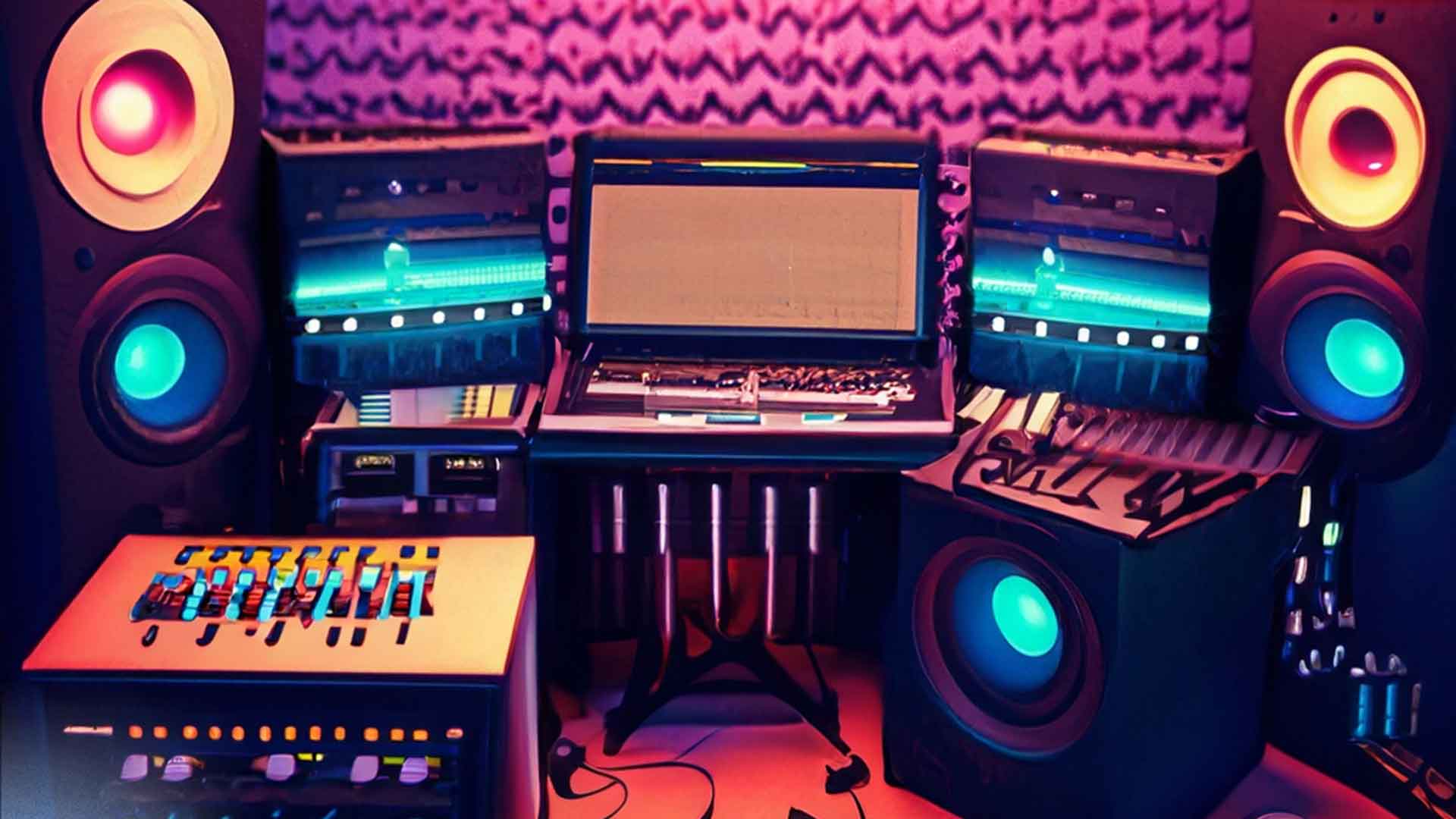
Are you a budding music producer with a passion for creating beats and melodies, but worried about the cost of setting up a professional studio? Fear not! In this article, we’ll show you how to achieve high-quality music production without draining your wallet. With the right mix of minimal hardware and software, you can embark on a thrilling musical journey without burning a hole in your pocket. Why should you read this article? Well, our music production team are experienced educators who are faced with this question weekly, everyone has had this question at some point and getting started is such an exhilarating experience that we enjoy sharing with everyone. So what do you need……?
1. Digital Audio Workstation (DAW):
A DAW is the heart and soul of your music production setup. There are several affordable options available that cater to beginners. Reaper, Ableton Live Lite which often comes bundled with other hardware, GarageBand or FL Studio are excellent choices for their user-friendly interfaces and feature-rich capabilities. FL Studio being a huge favourite in electronic music styles such as hip-hop variants and also drum n bass. These DAWs empower you to create, edit, and arrange your musical ideas effortlessly. The Lite version of Ableton is great because it is fully featured and you can upgrade this to more comprehensive packages like Suite in time if you require. Garageband, although Mac only, come with the mac os and is essentially a baby version of Logic that also allows for seamless upgrading when the time comes.
2. MIDI Keyboard Controllerf:
A MIDI keyboard is a game-changer for any music producer. It allows you to record melodies and play virtual instruments with ease. The expression that is captured from a real performance, no matter how technical, can be the difference between something sounding organic or mechanical. The Alesis V Mini, Novation Launchkey Mini, and Akai MPK Mini MK3 are budget-friendly options, and their compact sizes make them ideal for home studios or even on-the-go creativity. A smaller controller is great, but at times you may find yourself running out of keys as you become more confident with playing, so something a bit larger with a wider octave range like the Nectar SE 49, can fall in to a similar price range.
3. Studio Headphones:
While investing in studio monitors might be the dream, a good pair of studio headphones can provide a solid listening experience without the cost. Look for options like Audio-Technica ATH-M50x or Sony MDR-7506, renowned for their accurate sound reproduction and comfort during long sessions. One of the most important things to remember when considering headphones is comfort. You will learn the sound of what ever monitoring system you are using over time, but headphone wearing can be a difficult experience, so make sure you try a friends before taking the plunge if you can.
4. Audio Interface:
An audio interface is crucial for connecting your microphones and instruments to your computer. Focusrite Scarlett 2i2, PreSonus AudioBox USB, or Steinberg UR22C are affordable, entry-level options that deliver excellent sound quality, making them perfect for beginners. What ever you go for to start with, just know that it might possibly get replaced in the future as you upgrade and require more signal options, but understanding a smaller unit and how it is working will put you in a much more confident position right from the beginning of your journey and allow you to always be in control of your studio.
5. Virtual Instruments and Sample Packs:
Expand your sonic palette with virtual instruments and sample packs. Companies like Native Instruments, Spitfire Audio, and Output offer free and affordable plugins and sample libraries that can elevate your productions without costing a fortune. We have a range of free sample packs on our website, these are great for helping to get ideas started. Overtime you will accrue a huge amount of sounds and samples, so be organised from the beginning and set up a good folder system, or even consider a dedicated hard drive for sounds.
6. Cloud Storage Solutions:
Don’t forget to back up your precious music files! Utilise cloud storage services like Google Drive, Dropbox, or OneDrive to safeguard your projects and access them from any device with an internet connection. There are many to choose from and you might end up using them all for different reasons, one for collaborating, one for sharing with other non collaborators, one for back up. It’s your call, but try to be consistent with your use so that it becomes second nature to you. For example, back up and store important files in your Google Drive that is connected to your email address, share files with others through Dropbox as an example.

Remember, it’s not about the price tag of your equipment; it’s about your creativity and dedication to honing your craft. The music industry is constantly evolving, and there is no one-size-fits-all approach to success. Embrace your uniqueness and focus on creating music that resonates with you and your audience.
As you progress, consider investing in more gear and software based on your specific needs and growth. Networking with other producers, seeking inspiration from established artists, and continuously learning from online tutorials and forums will propel your music production skills to new heights.
So, embrace your passion, dive into your music production journey, and let your creativity soar. With a minimal budget-friendly setup and an abundance of passion, you can produce music that truly reflects your vision and talent. Happy producing!

